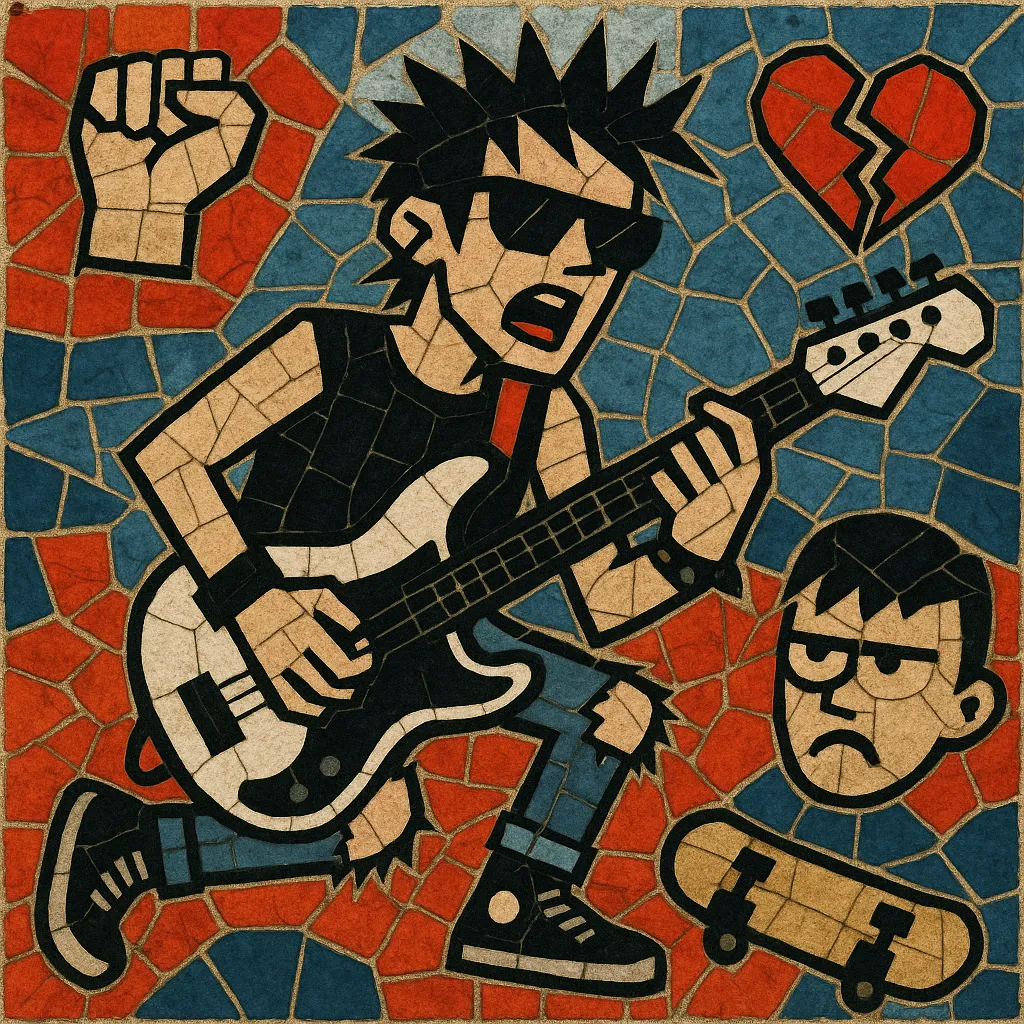Pop punk blends the speed and attitude of punk rock with the melody, hooks, and songcraft of pop. It features bright, concise songs driven by crunchy power-chord guitars, punchy drums, and catchy vocal lines that often favor gang shouts and harmonies.
Lyrically, pop punk tends to focus on adolescence, relationships, boredom, suburbia, and self-deprecating humor, delivered with a mix of earnestness and wit. Production ranges from raw and DIY to radio-ready polish, but the core is always immediacy: big choruses, tight structures, and energetic performances.
Pop punk emerged in the late 1970s when bands like the Ramones in the United States and the Buzzcocks in the United Kingdom welded punk’s speed and simplicity to classic pop melody and structure. These groups distilled three-chord garage energy into two-minute songs with unforgettable hooks, laying the blueprint for the style.
Through the 1980s, bands such as Descendents and The Undertones expanded the template with faster tempos, tuneful vocals, and lyrics about everyday life. In the U.S., the West Coast scene—intersecting with melodic and hardcore punk—nurtured a tight-knit network of independent labels and touring circuits that kept pop-inclined punk thriving.
The 1990s saw a seismic shift as Green Day and The Offspring crossed over from indie/punk scenes to international charts, proving pop-savvy punk could be both credible and commercially massive. Blink-182, with irreverent humor and immaculate hooks, helped define a radio- and MTV-dominant wave, while Warped Tour provided a touring infrastructure that amplified the genre’s reach.
The 2000s diversified pop punk’s palette. New Found Glory codified the style’s chugging guitars and skyscraper choruses, while bands like Sum 41, Good Charlotte, and Simple Plan pushed it into pop culture ubiquity. Parallel cross-pollination with emo produced a sleeker, emotionally charged strain that dominated rock radio and youth culture.
The 2010s introduced polished, electronic-tinged “neon” iterations and hybrids like easycore (fusing pop punk with breakdown-heavy metalcore). In the 2020s, a high-profile revival—boosted by social media, genre-blurring collaborations, and nostalgia—reintroduced pop punk aesthetics to new audiences while retaining its core formula of speed, melody, and cathartic choruses.
Use two overdriven electric guitars (one for rhythm power chords, one for lead hooks), electric bass with a bright pick attack, and a punchy drum kit. Keep tones tight and mid-forward rather than overly saturated.
Write in 4/4 with straight eighth-note downstrokes on guitar and driving kick–snare backbeats (snare on 2 and 4). Tempos commonly range from 140–190 BPM; occasional halftime pre-choruses or double-time bridges add contrast.
Favor major keys and diatonic, singable melodies. Build progressions from familiar pop shapes such as I–V–vi–IV, I–IV–V, or vi–IV–I–V. Use power chords (root–fifth) to keep harmonic motion clear at speed, and add suspended tones or passing leads for color.
Aim for tight structures (intro–verse–pre–chorus–chorus–verse–pre–chorus–chorus–bridge–final chorus). Make the chorus melodically highest and lyrically simplest for shout-along impact. Employ call-and-response vocals and gang harmonies to reinforce hooks.
Write conversational, direct lyrics about coming-of-age, relationships, and everyday frustrations. Mix earnest emotion with humor or self-awareness. Vocals should be energetic and slightly nasal, with clear diction and stacked harmonies in choruses.
Layer rhythm guitars hard-left/right for width, lock bass with kick for propulsion, and keep drums crisp with a present snare and articulate cymbals. Edit tightly so transients punch and transitions (stops, pick slides, drum fills) land precisely. Keep songs around 2–3.5 minutes to preserve momentum.


